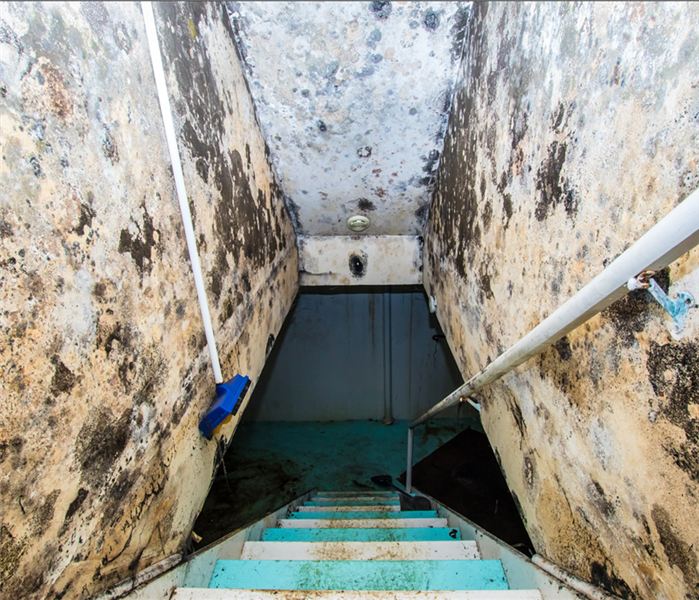How To Tell If Your Building Is Contaminated With Mold
7/30/2019 (Permalink)
Common Places Mold Growth Occurs
Just because you cannot see mold does not mean it's not there. Mold often lurks in the dark recesses of buildings and in places where humans either don't or cannot frequent. Some of the more common places mold growth occurs include the following:
- Air ducts
- Basements and attics
- Window sills and sashes
- Air conditioning units
- Beneath sinks
- Tile grout
- Carpet
If you suspect your building has mold but a visual inspection yields no evidence of it, contact an indoor environmental specialist in Arcadia, OK. The said specialist can take samples and perform a mold test to determine the extent of the damage.
Other Signs Your Building is Contaminated With
Mold
Chances are, there's a reason you suspect your building is hiding a mold infestation. Mold puts off a musty odor that many compare to that of a wet dog or a wet towel. If your building smells musty, there's a good possibility mold lurks beneath the walls.
Because mold feeds off surrounding materials, you may begin to notice that your drywall sags or that your ceilings seem frail and on the point of collapse. If you notice either of those symptoms, the infestation is likely extensive. Again, and indoor environmental specialist can tell you just how extensive the issue is.
If you discover a leaking pipe or signs of water damage, you should prepare for the discovery of mold growth. Mold almost always develops where there is an untreated water issue. Likewise, if your building was recently in a flood or fire, you should contact a professional to perform an inspection, just in case.
What To Do If Test Results Reveal Mold
If the mold test reveals that your building does, in fact, have mold, don't panic. A professional mold remediation specialist can use the findings from the indoor environmental specialist and devise a plan for quickly and effectively removing the fungus.



 24/7 Emergency Service
24/7 Emergency Service
